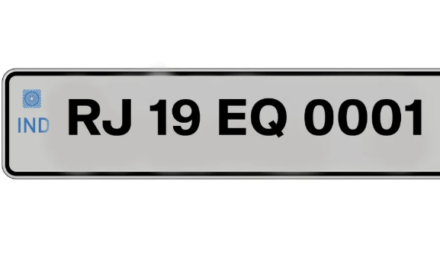In a market filled with varied investment instruments, the National Pension System (NPS) continues to be a reliable choice for long-term financial planning, especially when retirement security is a priority. With its structured savings mechanism and dual tax benefits, NPS offers flexibility and consistent growth potential over time. Moreover, with the growing digital infrastructure in India, making NPS contributions online has become not only convenient but also a strategic tool for maximising benefits from the scheme.
This post explores how individuals can enhance the advantages of their pension portfolio through disciplined online contributions and effective use of digital banking services.
Understanding NPS: A Retirement Tool That Works Long-Term
The NPS is a voluntary, government-backed pension scheme regulated by the Pension Fund Regulatory and Development Authority (PFRDA). It is open to all Indian citizens between the ages of 18 and 70 and aims to inculcate the habit of saving for retirement.
When an investor contributes to an NPS account, the amount is allocated to market-linked pension funds (as per the chosen asset mix), which accumulate wealth over time. On maturity, a portion of the corpus can be withdrawn as a lump sum, while the remainder must be used to purchase an annuity for regular pension income.
NPS is structured into two types of accounts:
- Tier I: Primarily for retirement, offering tax benefits and withdrawal restrictions.
- Tier II: A voluntary savings account with more liquidity and no tax benefits.
Benefits of Consistent NPS Contributions
A well-planned NPS investment strategy can yield substantial long-term gains. Here’s how regular contributions can benefit investors:
- Rupee Cost Averaging: Making NPS contributions online regularly, such as monthly or quarterly, helps average out market volatility, ensuring units are purchased at varied price levels.
- Power of Compounding: Longer investment duration combined with periodic contributions significantly enhances the final retirement corpus.
- Customizable Asset Allocation: Investors can choose between equity, corporate debt, and government bonds to suit their risk profile and financial goals.
- Portability: NPS accounts are portable across locations and jobs, ensuring continuity in contributions and accumulated benefits.
- Tax Benefits: Contributions up to ₹1.5 lakh per annum are eligible for deduction under Section 80C, with an additional ₹50,000 under Section 80CCD(1B), making NPS one of the most tax-efficient investment tools.
The Shift to Online Contributions: Why It Matters
The ease and security of NPS contributions online has revolutionised how individuals manage their retirement planning. Here are some advantages of choosing the digital route:
- Accessibility: Contributions can be made anytime, anywhere via internet banking or mobile applications.
- Transparency: Online platforms display real-time portfolio status, transaction history, and fund performance.
- Automation: Most banks offer auto-debit or scheduled payments, reducing the risk of missed contributions.
- Instant Acknowledgement: Receipts and account updates are provided immediately after payment, ensuring clarity and traceability.
How to Make NPS Contribution Online with Ease
To streamline your contribution experience, here’s a step-by-step outline of the online process:
- Log into Your Bank Account: Visit your net banking platform or mobile banking app. Reputed banks in India, including private sector institutions, provide direct integration with NPS services.
- Locate the NPS Section: Under the ‘Investments’ or ‘Pension Services’ section, click on ‘NPS Contribution’ or equivalent.
- Enter PRAN Details: Provide your Permanent Retirement Account Number (PRAN) and select the type of account (Tier I or Tier II).
- Choose the Contribution Amount: Enter the amount you wish to invest and the payment frequency (one-time or recurring).
- Select Payment Method: Authorise the payment through internet banking, debit card, or UPI.
- Confirmation & Receipt: Once the transaction is completed, an acknowledgement number and digital receipt will be generated for reference.
Some banks also offer reminder notifications, contribution history, and performance dashboards to help users track and manage their NPS investments effectively.
ICICI Bank’s Support for NPS Contributors
As one of India’s leading private sector banks, ICICI Bank provides integrated digital services for NPS contributions through both its iMobile app and net banking portal. Customers can open NPS accounts, view statements, and make periodic contributions seamlessly.
The bank’s secure and user-friendly interface enables quick access to investment tools, helping users stay consistent with their contributions. In addition, timely reminders and scheduled debit options further support disciplined pension planning.
Optimising Contribution Frequency: Monthly vs Annual
One of the most overlooked elements in pension planning is the frequency of contributions. Here’s how contribution frequency can influence your corpus:
- Monthly Contributions: Enable more regular investment and smoother cash flow management. They take advantage of rupee cost averaging and maintain investment discipline.
- Quarterly or Half-Yearly Contributions: Suitable for those with irregular income streams, such as freelancers or business owners.
- Annual Contributions: Useful for those who prefer to invest after evaluating annual tax liabilities, but may miss out on compounding benefits.
Using an NPS calculator can help estimate the final pension amount based on your planned contribution amount and frequency, helping you make informed decisions.
Using NPS Calculators to Plan Strategically
An NPS calculator allows you to visualise how much corpus you can accumulate based on:
- Contribution amount and frequency
- Current age and retirement age
- Expected rate of return
- Percentage of corpus used for annuity
By adjusting these parameters, you can tailor your investment plan to achieve specific retirement goals. Most calculators also show the tax benefits and the projected monthly pension post-retirement, enabling better financial foresight.
Tips to Maximize NPS Returns
- Start Early: The earlier you begin, the longer your money has to grow through compounding.
- Review Asset Allocation: Use the auto-choice option or manually allocate funds based on your evolving risk appetite.
- Top-up Contributions: Take advantage of the additional ₹50,000 deduction under Section 80CCD(1B) to optimize tax benefits.
- Track Fund Performance: Keep an eye on your fund manager’s performance and switch if necessary for better returns.
- Contribute Even in Retirement: Even after retiring, you can continue to invest in NPS till the age of 70, allowing your corpus to grow further.
Conclusion: Secure Your Future with Digital NPS Contributions
The National Pension System is designed for long-term wealth creation with minimal risk. With the ability to manage NPS contributions online, individuals now have greater control, visibility, and convenience in preparing for retirement. Whether you’re starting your career or nearing your 60s, consistent and well-planned contributions—powered by digital banking services—can help you secure a financially independent future.
Digital-first banks like ICICI Bank make the entire process seamless, encouraging more individuals to make informed decisions with tools like online dashboards, scheduled contributions, and investment tracking. When used effectively, NPS becomes more than just a retirement scheme—it becomes a cornerstone of your long-term financial strategy.





